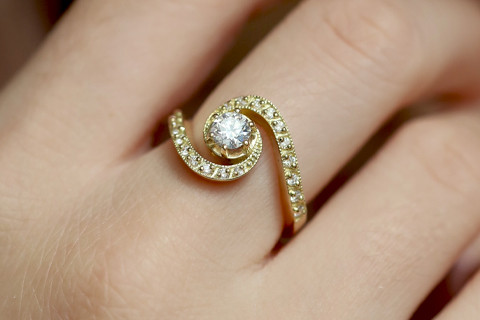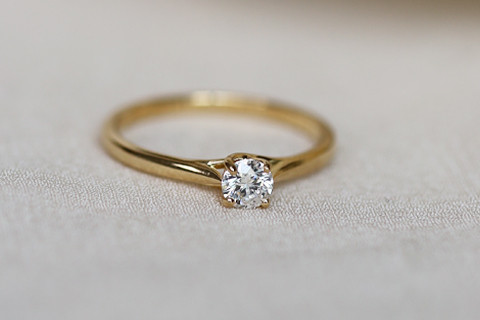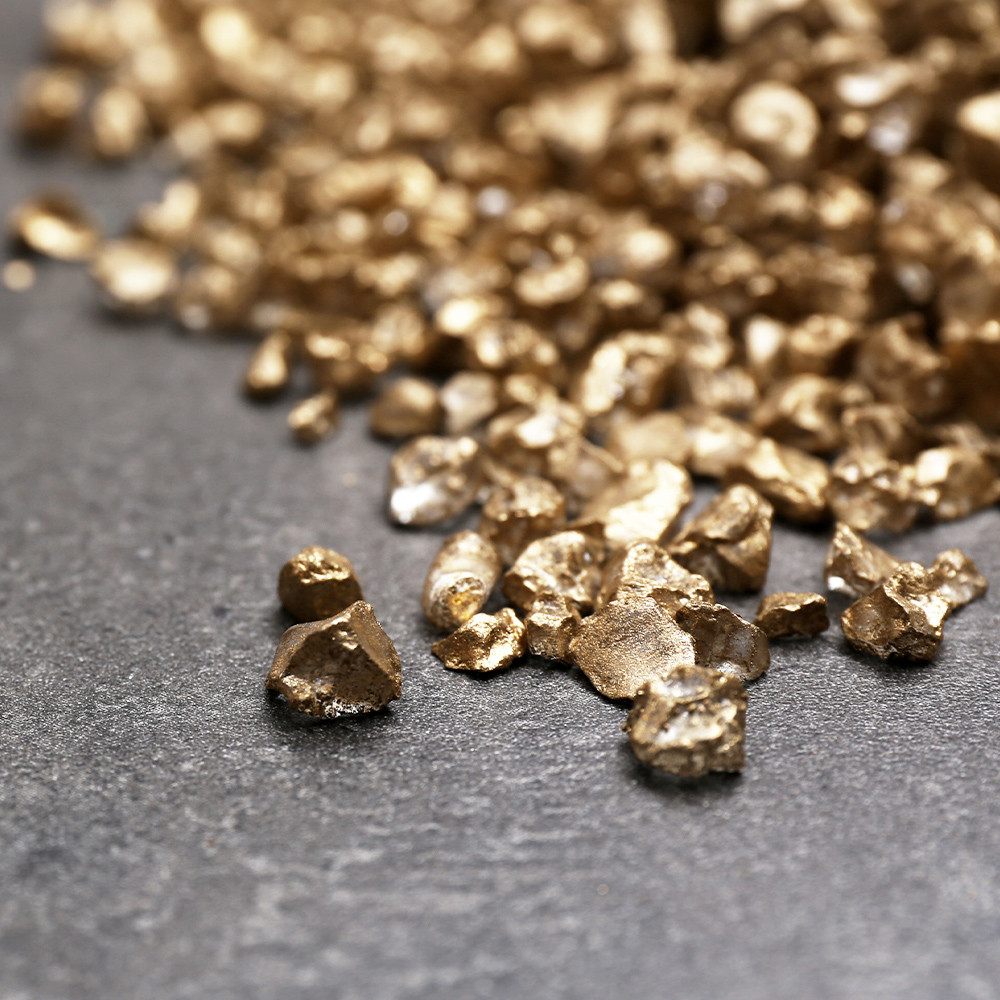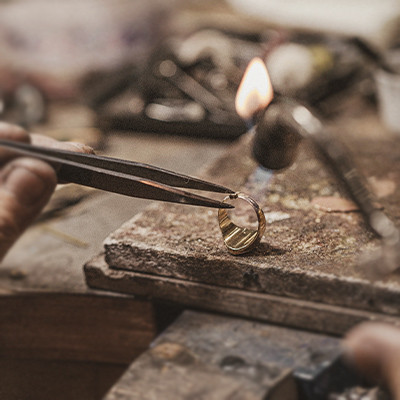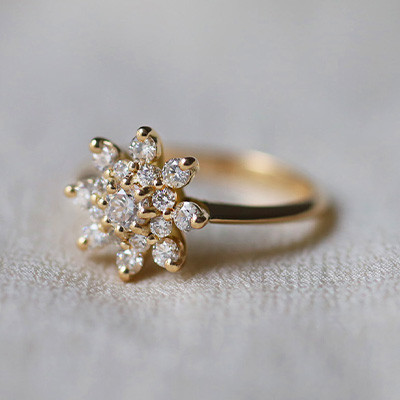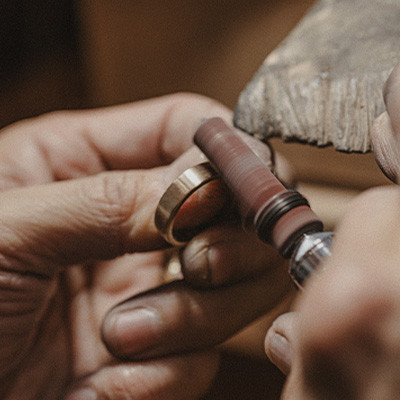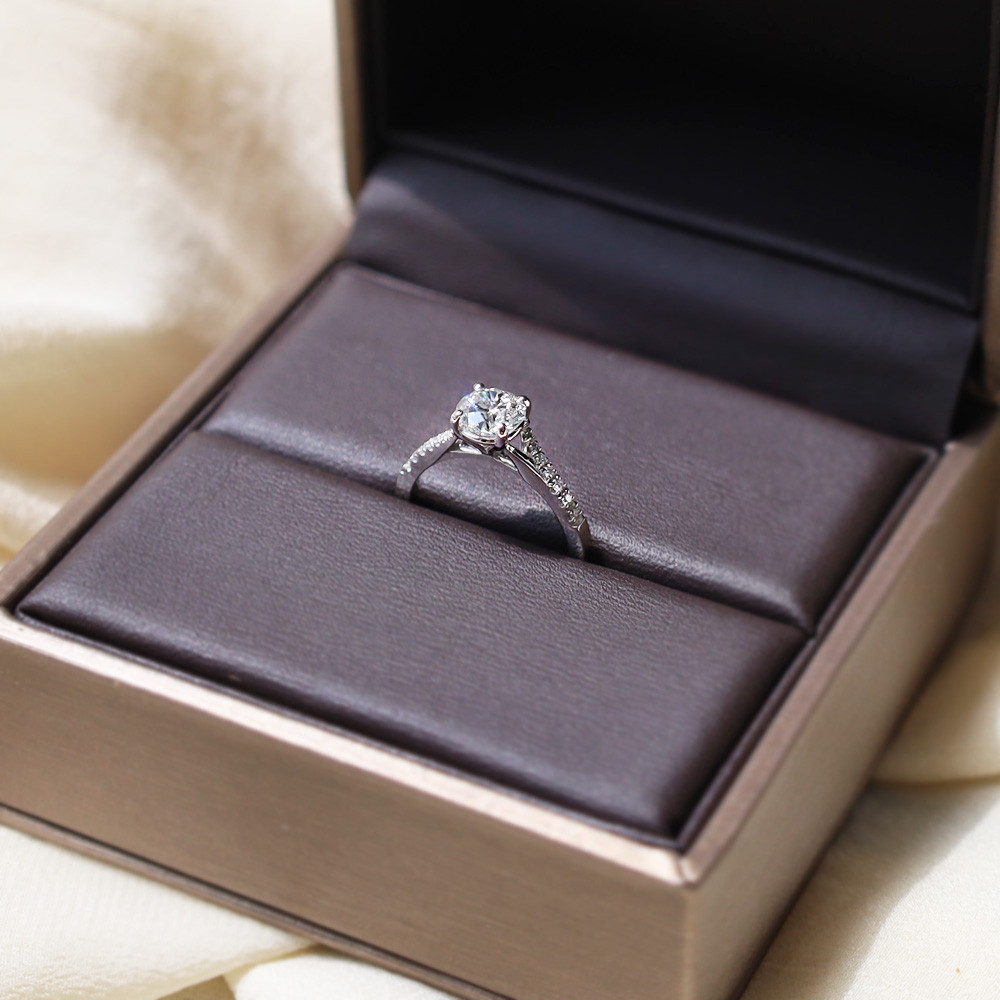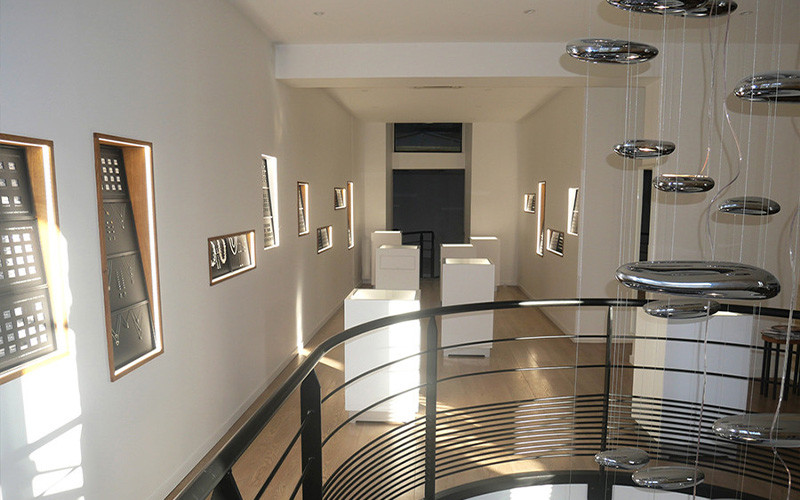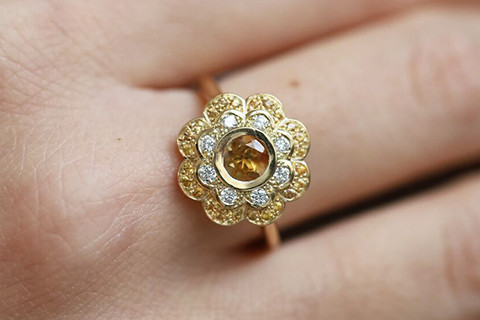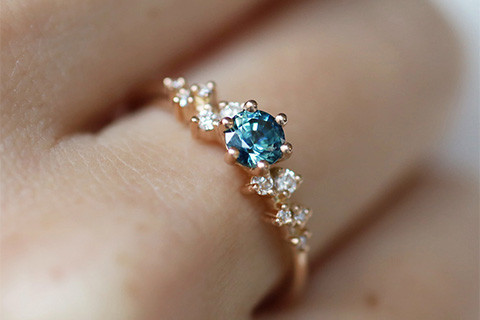The 4Cs of diamonds


4C: The four diamond selection criteria
To accurately assess the value of a diamond, it's essential to analyze all the criteria that define this precious stone, commonly known as the 4Cs: Carat, Color, Clarity and Cut. So, before selecting a diamond to be set in a piece of jewelry, it's essential to be aware of these factors. Each of these four criteria is of particular importance, and they are interdependent. For diamonds under 0.30 carat, only the first two criteria - carat and color - are taken into account. The other criteria are assessed by machines, requiring the stone to be submitted to a gemmological laboratory for certification. In France, diamonds with a minimum weight of 0.30 carat must be "compulsorily" certified, which constitutes a quality standard. However, on request, it is still possible to obtain certification for diamonds as small as 0.18 carat. The jewels offered on our website are automatically proposed with GSi1 quality diamonds. On request, we can personalize the quality by e-mail or in-store.
4C: The four diamond selection criteria
To accurately assess the value of a diamond, it's essential to analyze all the criteria that define this precious stone, commonly known as the 4Cs: Carat, Color, Clarity and Cut. So, before selecting a diamond to be set in a piece of jewelry, it's essential to be aware of these factors. Each of these four criteria is of particular importance, and they are interdependent. For diamonds under 0.30 carat, only the first two criteria - carat and color - are taken into account. The other criteria are assessed by machines, requiring the stone to be submitted to a gemmological laboratory for certification. In France, diamonds with a minimum weight of 0.30 carat must be "compulsorily" certified, which constitutes a quality standard. However, on request, it is still possible to obtain certification for diamonds as small as 0.18 carat. The jewels offered on our website are automatically proposed with GSi1 quality diamonds. On request, we can personalize the quality by e-mail or in-store.


Weight(carat)
The weight of a diamond is expressed in carats.The term carat is different from the unit used to measure the purity of gold. One carat (1ct) corresponds to 0.2 grams. Two stones of the same weight may have different diameters. The carat is divided into 100 units, so a 50-point diamond will weigh half a carat, or 0.50 carat.


Weight(carat)
The weight of a diamond is expressed in carats.The term carat is different from the unit used to measure the purity of gold. One carat (1ct) corresponds to 0.2 grams. Two stones of the same weight may have different diameters. The carat is divided into 100 units, so a 50-point diamond will weigh half a carat, or 0.50 carat.


Color
The color of a diamond is an essential element in its appraisal. A diamond is not necessarily white; in fact, there are many different color variations that define the value of this gem. White or colorless diamonds are considered rare and therefore more expensive than other gemstones. Diamonds are classified from colorless to yellowish according to the letters of the alphabet. This scale begins with the letter D for diamond, the general designation for all gem shapes (Brilliant, Princess, Marquise, Oval...). The letter D denotes an exceptionally white, totally colorless diamond, and ends with the letter Z for a dark yellow or even brown diamond. H is the commercial white found in 90% of stores. There may be yellowish spots inside, which is why we don't work below G.


Color
The color of a diamond is an essential element in its appraisal. A diamond is not necessarily white; in fact, there are many different color variations that define the value of this gem. White or colorless diamonds are considered rare and therefore more expensive than other gemstones. Diamonds are classified from colorless to yellowish according to the letters of the alphabet. This scale begins with the letter D for diamond, the general designation for all gem shapes (Brilliant, Princess, Marquise, Oval...). The letter D denotes an exceptionally white, totally colorless diamond, and ends with the letter Z for a dark yellow or even brown diamond. H is the commercial white found in 90% of stores. There may be yellowish spots inside, which is why we don't work below G.


Purity(clarity)
Because diamonds are natural stones, they have more or less impurities called inclusions. These impurities are tiny traces of non-crystallized carbons or small crystals formed inside the diamond. The fewer impurities a diamond has, the rarer and more precious it is. If a diamond has no inclusions, stains or marks, it is considered exceptionally rare. The GIA purity grading scale ranges from "Perfectly Pure" under a magnifying glass to "Piqués" P1, P2 and P3, i.e. inclusions visible to the naked eye.


Purity(clarity)
Because diamonds are natural stones, they have more or less impurities called inclusions. These impurities are tiny traces of non-crystallized carbons or small crystals formed inside the diamond. The fewer impurities a diamond has, the rarer and more precious it is. If a diamond has no inclusions, stains or marks, it is considered exceptionally rare. The GIA purity grading scale ranges from "Perfectly Pure" under a magnifying glass to "Piqués" P1, P2 and P3, i.e. inclusions visible to the naked eye.


Cut
The cut of a diamond is a crucial element in its beauty. The cut of a diamond is defined by the hand of man, unlike the previous criteria dictated by nature. The term "cut" refers to the shape given to the stone and the arrangement of its facets.In fact, there are different diamond shapes: Brilliant, Radiant, Princess, Cushion, Heart, Marquise, Oval, Emerald, Baguette, Pear... The cut of the stone creates certain plays of light, such as fire, brilliance and sparkle. Brilliance, or roundness, is the most commonly used cut, as it shines the brightest, hence its name. There are therefore three aspects to assessing a diamond's cut: its proportion, polish and symmetry, which are themselves graded according to four parameters: Excellent, Very Good, Good and Fairly Good. The proportions of a diamond correspond to the relationship between the size of the table, the angles of the crown and the depth of the breech.Finish has two aspects: polish, which corresponds to the overall condition of the surface of a diamond facet, and symmetry, which corresponds to the exactness of the shape and positioning of the facets.


Cut
The cut of a diamond is a crucial element in its beauty. The cut of a diamond is defined by the hand of man, unlike the previous criteria dictated by nature. The term "cut" refers to the shape given to the stone and the arrangement of its facets.In fact, there are different diamond shapes: Brilliant, Radiant, Princess, Cushion, Heart, Marquise, Oval, Emerald, Baguette, Pear... The cut of the stone creates certain plays of light, such as fire, brilliance and sparkle. Brilliance, or roundness, is the most commonly used cut, as it shines the brightest, hence its name. There are therefore three aspects to assessing a diamond's cut: its proportion, polish and symmetry, which are themselves graded according to four parameters: Excellent, Very Good, Good and Fairly Good. The proportions of a diamond correspond to the relationship between the size of the table, the angles of the crown and the depth of the breech.Finish has two aspects: polish, which corresponds to the overall condition of the surface of a diamond facet, and symmetry, which corresponds to the exactness of the shape and positioning of the facets.


